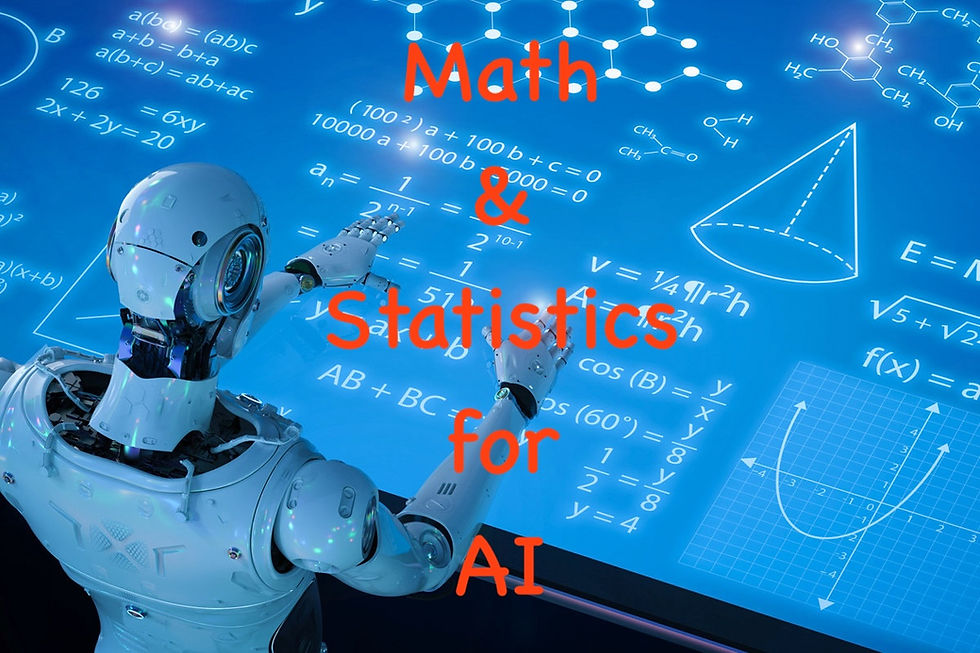Part 9: Demystifying Hypothesis Testing: A Simple Guide
- Revanth Reddy Tondapu
- Jun 23, 2024
- 3 min read

Hypothesis testing is a fundamental concept in statistics that helps us make decisions based on data. It can seem complex at first, but with the right examples, even high school students can grasp its essence. This blog post will break down hypothesis testing using easy-to-understand examples and analogies.
What is Hypothesis Testing?
Hypothesis testing is a statistical method used to make inferences about a population based on a sample. It helps us determine whether the observed effect in our sample is real or if it occurred by chance.
The Scenario: Testing a New Drug
Let's say there's a pharmaceutical company named Atliq Pharmaceutical, which has a popular drug called Drug A for treating headaches. Scientists at Atliq have developed a new drug, Drug B, and they claim that Drug B cures headaches faster than Drug A.
How do we test this claim?
Step-by-Step Process:
Formulate Hypotheses:
Null Hypothesis (H₀): Drug B is not more effective than Drug A.
Alternative Hypothesis (H₁): Drug B is more effective than Drug A.
Conduct a Clinical Trial:
Suppose we have 10 volunteers with headaches. We give Drug A to 5 volunteers and Drug B to the other 5.
We measure the time taken for each volunteer's headache to go away. Let’s say Drug A takes 4 hours on average, while Drug B takes 3 hours.
Initial Observations:
Based on this small sample, it looks like Drug B is more effective. However, with only 10 volunteers, our sample size is too small to make a definitive conclusion. We need a larger sample to ensure our results are not due to random chance.
Increasing Sample Size:
Let's increase our sample to 1,000 volunteers:
500 volunteers take Drug A.
500 volunteers take Drug B.
Again, Drug B takes an average of 3 hours, and Drug A takes an average of 4 hours.
Considering Variability:
We also need to ensure that our sample is representative of the population. This means including people of different ages, health conditions, and backgrounds to avoid bias. For example, if all 500 people taking Drug B are young and healthy, while those taking Drug A are older with weaker immunity, the results could be skewed.
The Role of Randomness
Nature often tricks us into seeing patterns where there are none. For instance, if you flip a coin seven times and get heads four times in a row, you might think the coin is biased. But in reality, this can happen due to pure randomness.
The Importance of Hypothesis Testing:
Hypothesis testing helps us rule out the element of randomness and determine if our observations are statistically significant. It allows us to scientifically prove whether Drug B is genuinely more effective than Drug A.
Key Concepts in Hypothesis Testing
Null Hypothesis (H₀):
The null hypothesis represents the established fact or the default position. In our case, it's the belief that Drug B is not more effective than Drug A. We start with the null hypothesis and try to find evidence against it.
Alternative Hypothesis (H₁):
The alternative hypothesis is what we want to prove. Here, it's the claim that Drug B is more effective than Drug A.
Why Start with the Null Hypothesis?
Starting with the null hypothesis helps us play the devil's advocate. We approach the new claim with skepticism and require strong evidence to reject the null hypothesis. This is similar to the legal principle of "innocent until proven guilty."
Conducting the Test:
To conduct hypothesis testing, we use statistical methods like Z-tests, T-tests, ANOVA, or Chi-Square tests. These methods help us eliminate the factor of randomness and determine if our results are statistically significant.
Practical Example: Coin Flipping
Imagine you flip a coin seven times and get heads four times in a row. You might suspect the coin is biased. However, this can happen due to pure randomness. Hypothesis testing helps us determine if the coin is genuinely biased or if the result is just a random occurrence.
Real-World Example: Employee Productivity
Before the pandemic, the common belief (null hypothesis) was that employees are more productive in the office. The alternative hypothesis could be that employees are equally or more productive working from home. Hypothesis testing can help us determine if the observed increase in productivity is due to working from home or just a random variation.
Conclusion
Hypothesis testing is a powerful tool that helps us make data-driven decisions and rule out randomness. By formulating null and alternative hypotheses and using statistical methods, we can scientifically validate our claims.
I hope this blog post has made hypothesis testing more understandable. If you have any questions or want to share your thoughts, please leave a comment below. Thank you for reading!
AssistantModel
Коментарі